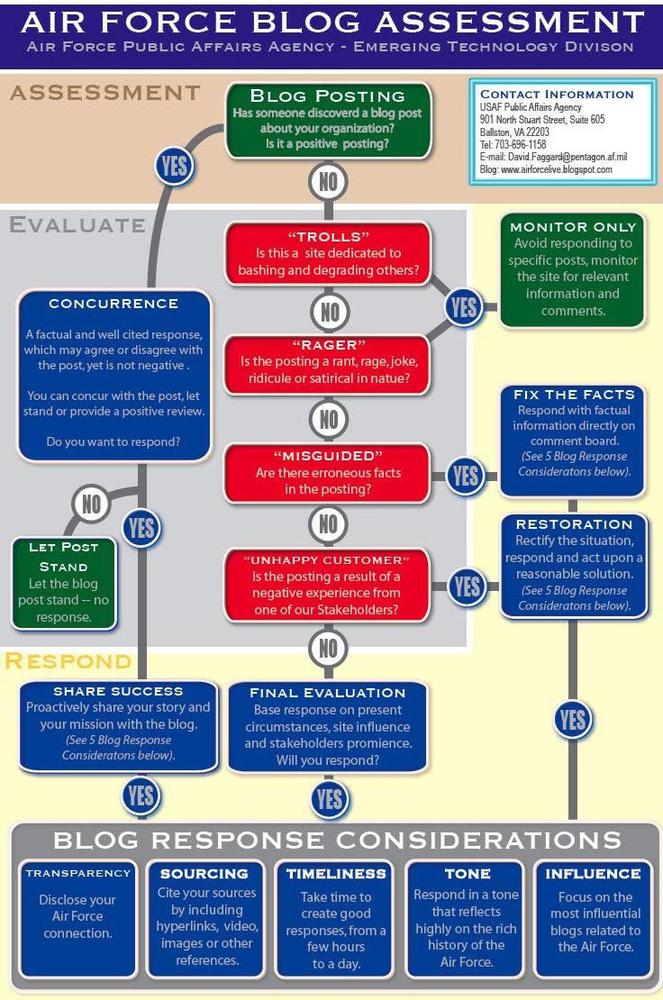Responding to the Community
Every time you see a conversation online that’s relevant to your organization, you need to consider following up. You might join the conversation, amplify what’s being said, or directly engage with those who are talking. Your response may be as simple as visiting a site and posting a comment or as complicated as mounting a dedicated marketing campaign to address a problem.
The U.S. Air Force developed an assessment tool, pictured in Figure 14-55, that helps it decide whether it should respond to comments and blogs. It’s an excellent example of turning community policies into clear, easy-to-follow directives that community managers can follow.

Figure 14-55. The Air Force blog assessment flowchart created by Capt. David Faggard, Chief of Emerging Technology at the Air Force Public Affairs Agency in the Pentagon
Join the Conversation
The most obvious step to take in a community is to join the conversation. You can do this to steer opinions, to meet others so that you can engage them personally, or simply to improve your reputation within the community.
If you’re adding information and opinions, make sure they’re independently verifiable and avoid spamming. Make sure you look at previous remarks to be sure you aren’t simply restating what someone has already said. Most importantly, start by listening: it’s a good idea to lurk for a while before jumping in.
Remember ...
Get Complete Web Monitoring now with the O’Reilly learning platform.
O’Reilly members experience books, live events, courses curated by job role, and more from O’Reilly and nearly 200 top publishers.

